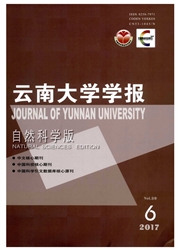

 中文摘要:
中文摘要:
为获取湖泊叶绿素a定量反演所需的最优大气校正方法,以太湖为例,分别使用FLAASH、6S及QUAC3种大气校正模型对HJ-1B卫星CCD数据进行大气校正,通过对比各波段反射率及遥感指数与叶绿素a的相关性,得到归一化水体指数相关系数最高,并使用归一化水体指数建立叶绿素a反演模型.反演模型尺。在0.7以上,同时通过了统计检验.实验利用太湖采样点平均光谱反射曲线及实测光谱对比大气校正模型的影像处理效果,并在此基础上,利用误差参数评价不同大气校正处理后的反演精度.结果表明:3种大气校正算法的影像处理效果总体较好,FLAASH和6S算法的各项参数接近,反演精度优于QUAC算法,并且聚类分析结果很好地证实了二者的相似性;QUAC算法在获得较高精度的同时其典型地物光谱出现失真.因此,在湖泊叶绿素a浓度反演建模时,大气校正方法应优先考虑FLAASH算法和6s算法,尽量避免使用QUAC算法.
 英文摘要:
英文摘要:
Taking Taihu Lake as our research object to find out a suitable atmospheric correction model in lake chlorophyll - a quantitative retrieving of remote sensing, FLAASH, 6S and QUAC models have been experi- mented in this study to implement the atmospheric correction on CCD data of HJ - 1B satellite. To get optimal re- trieving model, correlation coefficient among image bands, remote indexes and chlorophyll - a concentration have been analyzed and NDWI has been used to build retrieving models. The coefficient of determination ( R2 ) of mod- els is more than 0.7, and statistical test shows the result is sa tions have been compared with measure spectra. The accuracy tisfying. Then the spectrum curves at sampling sta- of retrieval models based on different atmospheric correction algorithms have been also studied by the error parameters. The study results indicate that it is feasible to retrieve lakes chlorophyll -a through remote sensing data based on atmospheric correction models, and the re- trieval parameters are very close between FLAASH model and 6S model ,which is consistent with cluster analysis. The precision of FLAASH and 6S is better than QUAC. Although QUAC algorithms can get high precision,it may lead to distortion of spectrum information. Therefore, FLAASH model and 6S model should be preferred approa- ches as to atmospheric correction algorithms to implement the atmospheric correction when we build the chloro- phyll- a retrieval models.
 同期刊论文项目
同期刊论文项目
 同项目期刊论文
同项目期刊论文
 期刊信息
期刊信息
